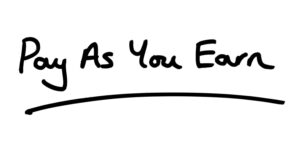One of the many advantages of owning a limited company is the option to make tax-efficient contributions to a company director pension. You can make payments into a private pension from your personal earnings and directly through your company, both of which can provide impressive tax savings.
This guide will discuss the basics of pensions for company directors, including the types of contributions you can make, pension tax relief, and contribution limits. All figures stated below are based on the current tax rates for the 2025-26 tax year.
Pensions for company directors
Setting up a pension may not be your biggest priority when running and growing a business, but it’s important to start planning for retirement as early as you possibly can. You don’t have an employer to set up a workplace pension for you, so the responsibility lies solely with you.
As a company director, you have access to two types of pensions – the State Pension and private (personal) pension schemes. The State Pension is unlikely to provide sufficient income when you retire, so it is highly advisable to set up a private director pension as well. That way, you can enjoy a more comfortable life after retirement.
Aside from offering financial security for your future, a private pension is also an incredibly tax-efficient way to extract profits from your company. This is because you can make contributions from your personal earnings (director’s salary) and your company profits, the latter of which provides the most significant tax benefits. Let’s take a look at these in turn.
Personal contributions
You can make personal contributions to a private pension through your PAYE director’s salary. What’s more, you will get a 20% tax relief bonus from the government on every contribution you make.
For example, if you pay in £100, the government will add £20 to your pension pot. Your tax relief will be even more if you are a higher-rate (40%) or additional-rate (45%) taxpayer.
This ‘bonus’ offsets the Income Tax that is deducted from your salary through PAYE before contributions are paid into your director pension. Essentially, it is a refund of the tax that you have paid to HMRC. The government provides this bonus to encourage people to save for their retirement.
However, these tax-free contributions are limited to an annual allowance of £60,000, which is tied to your salary. If you are an additional-rate taxpayer, you will be subject to a tapered (reduced) annual allowance on income above a certain amount.
The lifetime allowance of £1,073,100 was abolished with effect from 6 April 2024.
Can I make pension contributions from dividend income?
You can make additional personal contributions from your dividend income, but this is not recommended for the following reasons:
- You won’t get any tax relief on pension contributions from dividend income
- Dividends are paid from company profits after the deduction of Corporation Tax
- You will pay tax on dividend income above your £500 annual dividend allowance
It is best to make personal contributions into your pension pot from your PAYE director’s salary rather than dividends.
However, most company directors only pay themselves a relatively small salary, typically up to the tax-free Personal Allowance of £12,570, then take the rest of their income as dividends.
Whilst this approach is the most tax-efficient way to pay yourself through a company, your personal pension contributions from your salary will be far below the £60,000 annual pension allowance.
The solution is to make additional pension contributions directly from your company. This will provide more favourable tax benefits than increasing your director’s salary or using dividend income to top up your pension savings.
Company contributions
Pension contributions made directly from your limited company are not restricted to the salary threshold and annual pension allowance limit.
Consequently, you can pay more than £60,000 per year into your director pension pot as long as the total amount does not exceed your company’s annual profits.
For example, if your company makes £45,000 profit in a single tax year, £45,000 would likely be the maximum amount that the company could legitimately contribute to your director pension.
HMRC treats pension contributions as an allowable business expense if the payments are ‘wholly and exclusively’ for the purposes of the profession, trade, or vocation.
This means that you can offset the contributions against your business profits and reduce your company’s Corporation Tax bill, providing tax relief of 19% to 25% (depending on your company’s level of annual profits).
Moreover, unlike personal payments from your salary, pension contributions from your company are not liable to Income Tax or National Insurance contributions. You’ll receive full tax relief on any employer contributions up to the annual allowance.
What is the maximum amount I can contribute to a director pension?
In the UK, there is no hard limit to the amount of money you can contribute to a private pension. You can pay in as much as you like.
However, there are certain thresholds that limit the amount of tax relief you can receive on these pension contributions. These are the:
- annual allowance – £60,000 (as previously mentioned)
- lump sum allowance – £268,275
- lump sum and death benefit allowance – £1,073,100
Annual allowance
Private pensions are subject to an annual allowance of £60,000, or 100% of your gross PAYE salary earnings – whichever is lower.
This is the most that you can you contribute to your director pension in a tax year before you have to pay tax. It includes both personal and company contributions, as well as the tax relief that the government adds to your pension pot.
Example 1
If your director’s salary is £60,000 or more, the maximum amount that you can contribute to your pension in the current year and get tax relief is £48,000. The remaining £12,000 will come from the government’s 20% tax relief bonus.
Example 2
If your director’s salary is £12,570, the most that you can personally pay into your pension in the current year and get tax relief is £12,570. The government will then add a 20% tax relief bonus of £2,514.
However, you will be subject to a tapered annual pension allowance if:
- your ‘threshold income’ is above £200,000, and
- your ‘adjusted income’ is above £260,000
If you meet these income requirements, your annual allowance will reduce (taper) by £1 for every £2 of adjusted income above £260,000. For example, if your adjusted income is £280,000, your annual allowance will be reduced to £50,000.
This tapering stops at £360,000, which means that everyone receives an annual allowance of at least £10,000.
If you use up the full allowance for the current tax year, you may be able to carry forward any unused annual allowance from the previous three tax years. We discuss these ‘carry forward’ rules in more detail later in the post.
For tax years up to and including 2022-2023, the threshold income and adjusted income limits are different.
Lump sum allowance
To replace the lifetime allowance, the government introduced an individual ‘lump sum allowance’ and ‘lump sum and death benefit allowance’, with effect from 6 April 2024. These allowances limit the amount of tax-free benefits you can receive from your pension schemes.
You can normally take up to 25% of the amount you have in any of your pensions as a tax-free lump sum. With the individual allowance, the most you can receive is limited to £268,275 – although it may be higher than this if you hold a protected allowance.
Under certain circumstances, the lump sum and death benefit allowance can provide you or your beneficiaries with a lump sum of up to £1,073,100 tax-free. For example, if you need to take a lump sum due to serious illness, or your beneficiaries receive certain lump sum death benefits.
Where a lump sum exceeds the allowances, the extra amount will be subject to Income Tax. Your pension provider will deduct the charge before making the payment.
Protecting your lifetime allowance
Whilst the lifetime allowance was abolished on 6 April 2024, you may be able to apply to protect your lifetime allowance if you had pension savings prior to April 2016.
This protection also applies to both your lump sum allowance and lump sum and death benefit allowance.
If your pension contributions exceed the annual allowance
It is your responsibility to keep track of your total pension contributions. If you exceed the pensions annual allowance in a tax year, your pension provider will send you a statement to notify you.
In such instances, either you or your pension provider will have to pay the ‘pensions annual allowance tax charge’ on the excess contributions.
You will need to declare this in the ‘Pension savings tax charges’ section on your next Self Assessment tax return, even if your pension provider pays some or all of the charge.
Generally, the rate of the charge will be linked to the highest rate of Income Tax that you pay.
How to claim tax relief on a director pension
Claiming tax relief on a director pension is relatively easy for most people.
When you make personal contributions, your pension provider will claim the first 20% tax relief on your behalf, known as a ‘relief at source’. This is equivalent to the basic rate of Income Tax, which you will have already paid on your salary through PAYE.
When the government approves the claim, your tax bonus will be automatically added to your pension pot within approximately two to three months.
- Do I need an accountant to do my Self Assessment tax return?
- 12 Self Assessment expenses you didn’t know you could claim
- The top 10 Self Assessment tax return mistakes – and how to avoid them
However, if you are a higher-rate or additional-rate taxpayer (in England, Wales, or Northern Ireland), you will need to personally claim your additional relief when you file your Self Assessment tax return. Higher-rate taxpayers can claim an extra 20% relief, whilst additional-rate taxpayers can claim a further 25%.
If you pay Scottish Income Tax, your pension provider will claim 20% tax relief for you on any amount you’ve paid 19% tax on. You don’t need to pay the difference. Above the 20% tax band, you can claim the following additional relief through Self Assessment for the money you put into a private pension:
- 1% on any amount liable to 21% tax
- 22% on any amount liable to 42% tax
- 25% on any amount liable to 45% tax
- 28% on any amount liable to 48% tax
You can contact HMRC to claim if you don’t fill in a Self Assessment tax return. If you do not receive your tax relief automatically, or you don’t claim the additional tax relief that you are entitled to, you can backdate your tax relief claims up to four years.
Carry forward rules – claiming unused annual pension allowance
In certain situations, you may be able to ‘carry forward’ any unused annual pension allowance from the previous three tax years.
This means you can exceed your annual allowance and still benefit from the tax relief bonus if you didn’t make the maximum contribution in any or all of the last three years.
For example, if you didn’t pay anything into your pension for the previous three years, you can make a backdated contribution of up to £140,000, including tax relief.
Carry forward eligibility
To be eligible to carry forward, you will need to satisfy the following conditions:
- You must have been a member of at least one UK-registered pension scheme or a qualifying overseas pension scheme during the relevant tax years you wish to carry forward. The State Pension does not count in this instance.
- You must earn at least the amount that you wish to contribute in the current tax year. For example, if you want to make a total contribution of £140,000, you must earn at least £140,000 in the tax year you are making the payment.
The carry-forward rules are particularly useful if:
- You earn more than £60,000
- Your earnings fluctuate each year
- Business expenses were unusually high, or profits were low in one or more of the previous three tax years, preventing you from making the maximum pension contributions
- Your company profits have increased significantly and you would like to invest some of this money in your pension
- Your earnings in the current tax year are subject to the tapered annual allowance and you would like to top up your pension savings
HMRC provides an online pension annual allowance calculator, which you can use to work out whether you have any unused annual allowance available to carry forward. You can also use this calculator to check if you have an annual allowance tax charge on your pension savings.
These calculations can be complex. We recommend speaking to an accountant or tax specialist for expert help and guidance on taking advantage of the carry-forward rules for your director pension.
How do I qualify for the State Pension?
The State Pension is a small, regular payment that the government provides to most people when they reach the State Pension age. The amount you receive depends on your National Insurance contributions (NIC), with the maximum sum for the 2025-26 tax year as follow:
- £230.25 per week for the new State Pension
- per week for the basic State Pension
To receive the full State Pension, you must have 35 ‘qualifying years’ of NIC. To be eligible for any State Pension at all, you will usually require at least 10 qualifying years.
Even if you are eligible for the full amount, it will be wholly inadequate to fund a comfortable retirement. This is why it is imperative that you set up a private director pension and take advantage of the tax reliefs available on your personal and company contributions.
You can check your State Pension forecast at GOV.UK to see how much you are likely to receive. It is also worth checking your National insurance record online to determine whether there are any gaps in your NIC record and if you are eligible to make voluntary contributions to fill any such gaps.
In summary
Setting up a company director pension is one of the most tax-efficient ways to extract profit from your business and accumulate much-needed wealth for your retirement.
You will benefit from significant tax savings and tax reliefs if you plan your pension contributions properly, making a combination of payments through your director’s salary and directly from company profits.
Pensions are notoriously complex, so we strongly recommend that you consult an accountant, financial advisor, or tax specialist to discuss your options. They can help you find director pension schemes to suit your circumstances and advise on the best strategy for making regular contributions to your pension savings.
If you have any questions about this post or any other aspect of setting up and running a limited company, please leave a comment below or contact our company formation team.
Please note that the information provided in this article is for general informational purposes only and does not constitute legal, tax, or professional advice. While our aim is that the content is accurate and up to date, it should not be relied upon as a substitute for tailored advice from qualified professionals. We strongly recommend that you seek independent legal and tax advice specific to your circumstances before acting on any information contained in this article. We accept no responsibility or liability for any loss or damage that may result from your reliance on the information provided in this article. Use of the information contained in this article is entirely at your own risk.












Join The Discussion
Comments (12)
I have a limited company with 2 directors, myself and wife. She has no pension, I already have a generous pension . Can we pay maximum into her new pension but not one for me, we are joint owners 50/50, will it appear to be tax avoidance?, i don’t need a pension, wife does, thank you
Hi Colin,
Assuming there are no other factors (e.g. the need for other shareholders to approve etc), then we do not see an issue with what you propose providing the company has, as the article mentions, generated sufficient annual profit.
I hope this answer can help with any queries.
Kind regards,
The 1st Formations Team
Thanks for a very helpful article. Please can I check a couple of points?
1. In example 2, the director’s salary is £12,570. Thus no income tax is paid. Despite there being no tax paid, will the Government still make up the notional 20% in contributions to the pension provider?
2. Can I just check the maths? In the same example, if the Government is making up the 20% of pretax pay that would notionally have been paid – even though it wasn’t due to £12,570 being below the threshold – then that implies a pre-tax notional income of (£12,570/0.8) = £15,712.50. Thus the 20% would be £3,142.50, rather than the £2,514 quoted in the article. I guess my question is, does the HMRC contribution represent 20% of the pre-tax notional pay, or 20% of the pension contribution?
Many thanks for your comments – we’re glad you found the article useful! Responding to your questions in reverse order:
2) Assuming the director has no other relevant UK earnings and is ineligible to make any back-dated claims, if their salary is £12,570, tax relief would only be provided on £10,056 (we appreciate you flagging this up and we’ve edited the article accordingly). Tax relief of £2,514 equates to 20% of the total amount contributed of £12,570.
1) Yes, as above, despite no income tax being paid, the Government will add 20% tax relief.
We would always suggest seeking advice from financial professionals in addition our response.
If you have any further questions, please let us know.
The 1st Formations Team
I really enjoyed this article. Thanks. I understand the p/l aspects of the article, and the personal pensions points. However, it’s not clear to me whether pension contributions made directly by the company to a director’s pension scheme must be disclosed on the director’s annual tax self assessment. For example, director’s salary of £12,570 supplemented by £12,000 (plus tax relief) company contribution to a SIPP. What does the director disclose on his/her self assessment – £12,570 ? £24,570 ? or £27,570 (£12,570 + (£12,000 x 1.25)) ? Thanks !
Thank you for your comment, Bob. We are unclear what is meant by “supplemented by £12,000 (plus tax relief) company contribution to a SIPP” so would encourage you to speak to a pension adviser. As we cannot offer tax advice, we suggest you discuss your tax return with an accountant however our limited understanding is that payments made by an employer to an employee / director’s pension (as opposed to employee contributions paid into a pension by an employer) would only need to be considered on an employee / director’s tax return if the total contributions exceeded the annual pension allowance.
Kind regards,
The 1st Formations Team
Whilst factually correct, I found this article a little mis-leading in talking to the benefits of employer contributions over the £60k allowance more than the implications. My understanding is in such cases, the employee would personally have to pay tax on the excess over that allowance, negating the saving in Corp Tax. That assumes the employee has already used up their annual allowances over the last 3 years.
Thank you for your kind comment, Paul.
We will bear this in mind and may edit this article to make your point clearer.
Kind regards,
The 1st Formations Team
Can you add to this excellent article what happens to the company and individual if the business owner pays company contributions to their own pension scheme that are in excess of the annual and or lifetime limits.
e.g. the company pays £100k and the business owner pays in none? Any penalty or tax liability to the individual [in the case where the individual contributes nothing so there are not tax benefits] or the company [e.g. offset against corp tax]?
This point doesnt seem to be covered by any articles on the subject, but would appear the most efficient way for business owner directors to contribute larger amounts to their pension scheme? And is much more favourable than either corp tax + dividend or employers NI, employess NI + income tax less tax refunds if used as employee contributions.
Thank you for your kind enquiry, Neil.
Unfortunately we are unregulated in this area and therefore we aren’t able to provide advice on this subject. We would recommend contacting a pensions expert for more information relating to your query.
We are sorry we can’t be of more assistance in this instance.
Kind regards,
The 1st Formations Team
Loved this blog- so useful.
We’re pleased you found this blog article informative.
Kind regards,
The 1st Formations Team